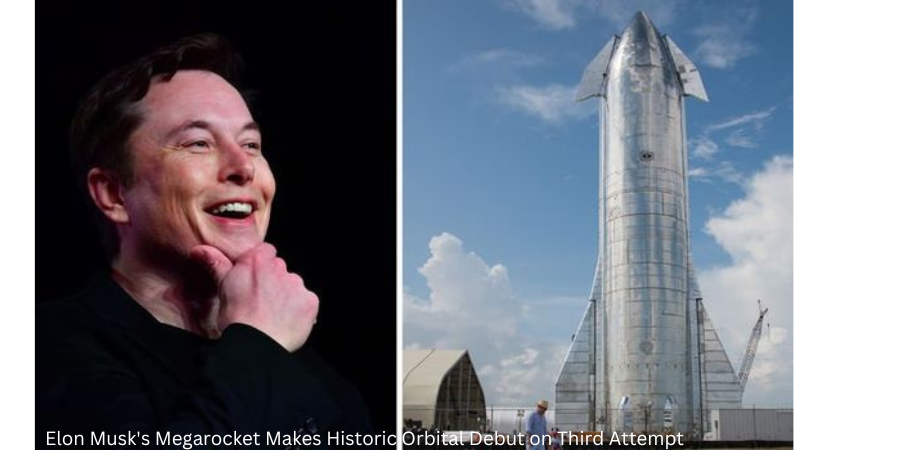After two near misses, Elon Musk‘s Starship finally achieves orbit on its third attempt, marking a giant leap for deep space travel. This 1000-word article explores the details, significance, and future implications of this historic mission.
Soaring to New Heights: A Deep Dive into Starship’s Historic Orbital Flight
Elon Musk’s ambitious Starship program has taken a monumental stride forward. After two suspense-filled test flights, the colossal Starship upper stage triumphantly reached orbit for the very first time on Thursday, launching from SpaceX’s Starbase facility in Texas. This achievement marks a watershed moment in the development of a fully reusable launch system capable of transporting humans and cargo to celestial destinations like Mars.
A Launch to Remember
The launch itself was a sight to behold. The towering Starship-Super Heavy stack, stretching an awe-inspiring 390 feet (120 meters), ignited its mighty Raptor engines with an earth-shaking roar, sending a plume of fire skyward. The colossal booster propelled the Starship upper stage towards the heavens, achieving escape velocity and separating cleanly after a few minutes of ascent.
Reaching for the Stars
The real drama unfolded as the Starship continued its solo ascent. The upper stage climbed steadily, culminating in an apogee, or highest point, of approximately 230 kilometers (143 miles) above Earth. This critical milestone confirmed Starship’s ability to achieve orbital velocity, a fundamental capability for future missions.
A Touchdown Test Awaits
While the launch and orbital insertion were resounding successes, a hurdle emerged during re-entry. Communication with the Starship was lost shortly after it began its descent back to Earth. The cause of this remains unclear, with heat shield damage or propellant management issues being potential culprits. Unfortunately, the Starship ultimately succumbed to the challenges of re-entry and was lost at sea.
A Triumphant Step Forward
Despite the bittersweet ending, the significance of the orbital achievement cannot be overstated. This success validates the core tenets of the Starship program – the reusability of the Super Heavy booster and the immense power of the Raptor engines. Data gleaned from this flight will be instrumental for SpaceX engineers as they continue to refine the design and capabilities of Starship.
Learning from Setbacks
The road to this success has been paved with challenges. The first two Starship test flights, conducted in May and July of 2023, resulted in dramatic explosions during landing attempts. These setbacks, however costly, provided invaluable insights into the complexities of operating such a large and powerful vehicle. SpaceX engineers meticulously analyzed the data from these test flights, implementing design modifications and conducting extensive simulations to improve the Starship’s performance.
A New Dawn for Space Exploration
The successful orbital flight reignites the flames of excitement for the future of space exploration. Starship is envisioned as the cornerstone of SpaceX’s ambitious aspirations to colonize Mars. With its substantial payload capacity and ability to be refueled in orbit, Starship could enable the transportation of hundreds of people and significant amounts of cargo to the Red Planet.
The Road Ahead
Looking ahead, SpaceX will likely embark on a period of in-depth analysis of data from the third test flight before attempting another orbital mission. Re-entry remains a critical challenge to overcome. The development of a robust heat shield and dependable propellant management systems will be paramount for ensuring the safe return of future Starship payloads, be it crew or cargo.
A Giant Leap for Mankind
While the journey to Mars is far from over, this successful orbital test flight marks a giant leap forward for Starship. It demonstrates the immense potential of this revolutionary launch system and paves the way for a future where humanity’s reach extends beyond Earth’s atmosphere. The coming years will be pivotal for SpaceX as they refine Starship’s capabilities, bringing the dream of interplanetary travel tantalizingly closer to reality.

